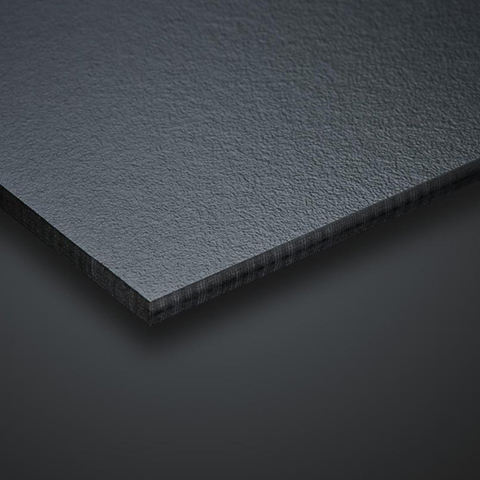Residence Cap Horn Courseulles-sur-Mer




An imposing condominium complex in Courseulles-sur-Mer (Normandy) celebrates sustainability with its container ship colors and design
Located on the Calvados coast, Cap Horn - an imposing, 200-unit condominium complex - is now a real eye-catcher. The upgrade is far more than a simple façade renovation: ‘spectacular resurrection’ is a much more fitting description. A grey and ageing building, one of thousands like it, has been transformed into a colorful ensemble inspired by the container ships that are so familiar to the residents and holidaymakers in this seaside resort near Le Havre.
A compelling invitation to travel the world, in the words of architect Emmanuel Boisbourdain (Atelier de la Touques). “The idea for the container ship design came fairly naturally and immediately appealed to the building management organization and all the owners, although obviously we had to make some changes along the way. Initially, the owners’ association had asked us to renovate this building, which was built in the 1970s according to the standards of the day for holiday accommodation, and therefore poorly insulated. Because people now expect much higher standards in terms of comfort, we wanted to improve the thermal insulation of the façades during the renovation. This is the third building at Courseulles-sur-Mer that we have upgraded in this way.”

Fresh new colors
Cap Horn is particularly audacious in comparison to the other projects. All the façades have been clad with Trespa® Meteon® High Pressure Laminate (HPL) panels, which are both aesthetically pleasing and highly durable, in a design that clearly evokes a container ship with its multi-colored cargo containers. The colors have been purposely chosen to highlight this similarity, although the architect had to tone down the initial color scheme somewhat, in line with guidelines set by the architect of Bâtiments de France. In the end, 6 different colors were used: A12.3.7 Carmine Red and A22.6.2 Dark Denim for the “hull”, A05.0.0 Pure White, A08.3.1 Stone Grey, A10.4.5 Sienna Brown and A23.0.4 Mineral Blue for the containers. Although gaining the approval of more than 200 owners seemed anything but a foregone conclusion at first, the strength of the concept immediately appealed to most of them. Sophie Bourdelles (FONCIA Normandie, the company responsible for managing the condominium building): “Several samples were presented to the owners during the annual meeting and they were immediately won over. This renovation has given the building an astounding facelift. It really is a superb project.”
Beyond the aesthetics, the quality of the product is also a major plus for the building. Trespa, which has built an excellent reputation for itself over a period of several decades, with countless reference projects in France and abroad, has proven to be a high-value asset for owners who want to protect their investments. Most of the owners of the units in the Cap Horn building are well aware that this renovation has both improved comfort and increased the value of their apartment.

All technical challenges successfully overcome!
Both the architect and project principal were receptive to Trespa's arguments for making the building more sustainable. As the project is located directly on the coastline, the façade cladding had to withstand a particularly corrosive marine atmosphere on the one hand, and also stand up to high wind loads. High impact resistance (for the cladding at the bottom of the façade) and a non-porous material surface for easy cleaning were among the other selection criteria. Once the product and the installer had been chosen, Trespa was called in to ensure smooth and effective implementation.
Major construction site
For Ludovic Cauchi, technical director at Esnault Charpente, the installer, Cap Horn is a landmark reference. The company's projects generally entail roughly 500 square meters of cladding, so this job - almost 4000 square meters of Trespa® Meteon® panels - was a first. “Phasing the work, block by block, is one of the main challenges of a contract this size. The scaffolding was erected first, followed by removal of the old asbestos cladding, an activity that blocked all other renovation work on the façade. Then the framing was installed. A global order for the panels had already been placed at the start of the project to ensure timely delivery. After completion of the framing, we drew up an exact schedule for cutting and drilling the panels. Then all that remained to be done was to install the elements on site. Put briefly, you typically need 18 to 20 months for a construction site like this.”
Close collaboration for a unique result
Freddy Crespel, business manager at Trespa, sums up the spirit of healthy collaboration that inspired everyone involved in the project to achieve an outstanding result. “Once the project got under way, everyone worked extremely transparently each time we met to discuss progress. We always jointly look for sustainable solutions, even in the case of small buildings that are literally dwarfed by this massive 4000 square meter contract. The architect even created a wall poster so that I could present the project internally to our executive board. We all worked together smoothly to make this exceptional project a success.”
According to Emmanuel Boisbourdain, this project epitomizes the artistic and creative aspects of an architect's work: “This was a slightly forlorn vessel, like a shadowy outline at the edge of a mudflat, swathed in black and white; we wanted to restore her pride, see her ready to set sail again, transform her into an invitation to travel the world. To achieve this, we modernized her and recreated the wheelhouse, gave her a fresh coat of paint in the shipowner's colors, loaded the containers onto her deck and turned the bow towards the sea so that she and her crew could set off again on a long voyage to an imaginary Cape Horn.”


















